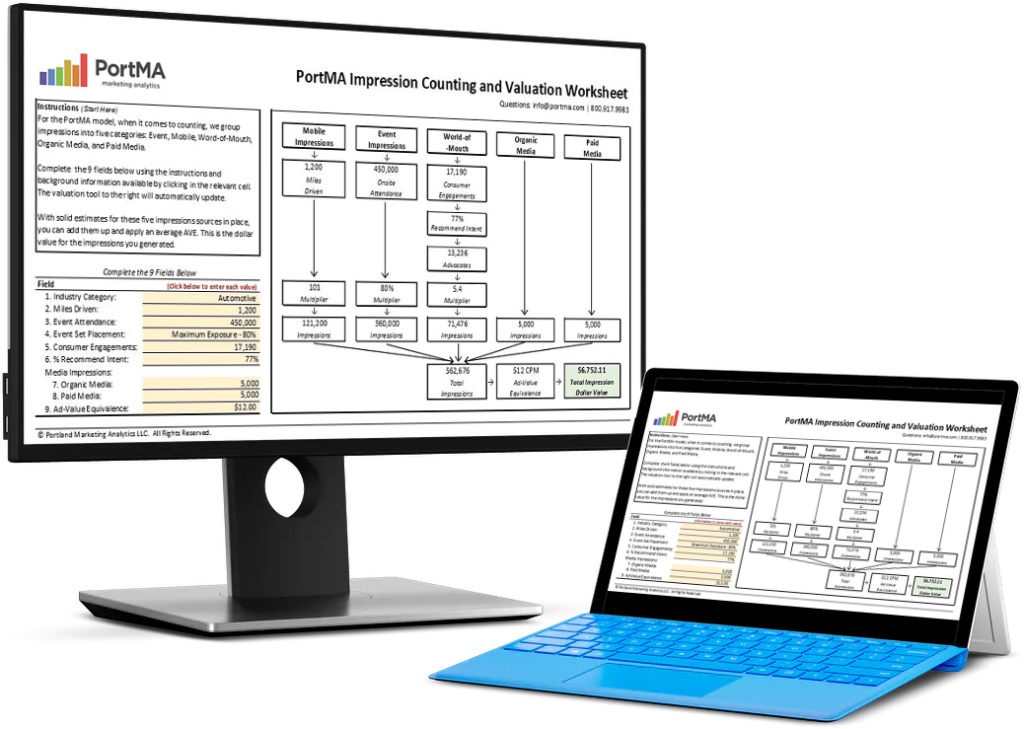
When deciding what you want your experiential marketing field staff to report, it’s easy and common to get caught up in the matter of what means what. If the meaning is not clear to you, it is not clear to your field staff either. Using standard definitions can keep reporting and analysis consistent.
Consistency in Field Staff Event Recap Metrics Above All Else
Accuracy is not attainable without consistency. Using the consistent definitions of terms gets the accurate analysis you need. Well-defined terminology will even make the bias you may have introduced consistently. Therefore, proportions will remain intact. If, on the other hand, everyone on the team is doing their own thing, the data collected will be random. Random date = garbage. Remember, “Garbage in; garbage out.” You will never discover trends or consumer insights without established disciplined definitions.
Achieve con by using standardized definitions across all key event marketing recap metrics. We typically see the most inconsistency in capturing and measuring experiential marketing Impressions, Interactions, and Immersions.
Experiential Marketing Impressions
“Impressions” are the number of people who first become aware of the brand because of your activation. One person equals one impression, regardless of how many times they engage. (If a newly aware consumer is engaged both inside and outside of the event, it counts as only one impression. Do not count the same person twice.) There are five types of Impressions:
- On-site Event Impressions
- Experiential Word-of-mouth Impressions
- Mobile Impressions
- Online Media Impressions
- Off-line Media Impressions. (See my in-depth post on Experiential Impressions for more information.)
Do not let your field staff estimate impressions. Doing so is neither accurate nor consistent. Instead, ask them to record the metrics you use for your calculations (e.g., interaction counts, event attendance, and miles driven).
Event Interactions vs. Immersions
“Interactions” take place when consumers engage at your activation. “Engagement” happens when a consumer interacts with the brand at an experiential marketing event.
“Immersions” are in-depth interactions. Immersions last longer and typically generate greater consumer impact than interactions.
Ask field staff to report how many times key event-set elements were engaged (e.g., number of wheel spins, demos delivered, VIP seats filled, etc.). Ask them to report the number of people who participated in each “Event Activity.” The people who participate in the Event Activities are “Interactions.” You can work through the details post-event at the office. Then you can decide which event occurrences qualify as an impression, an interaction, or an immersion.
In conclusion, this clarifies some consistent metrics for experiential marketing impressions, interaction, and immersions. If you have any questions, please give us a call, or contact one of our Event Marketing Analysts directly.

Download the Free Spreadsheet Tool
CALCULATE THE DOLLAR VALUE OF EVENT IMPRESSIONS
PortMA Impression Counting and Valuation Worksheet
Download this spreadsheet and complete the fields for your campaign to get a clear count of your activation impressions translated into a dollar value.
Impression Spreadsheet
